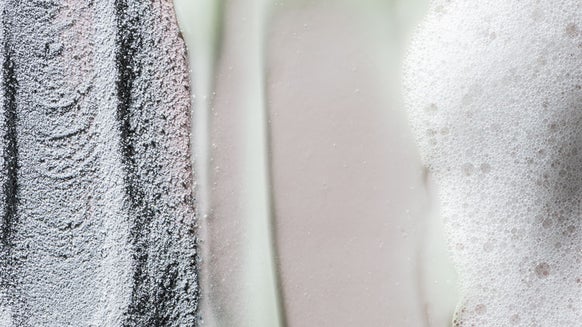The Differences Between Acne and a Skin Rash on the Face
Drugstores are awash in concealers, cleansers and fashion magazines displaying models with radiant, perfect skin. In reality, everyone's facial skin is sensitive to oil buildup, pollutants, stressors and sun exposure, which makes maintaining flawless skin a tall order. If you're not sure what type of skin problem you have, here are some telltale signs to spot the difference between a breakout and more serious skin issues like rosacea, eczema, hives and allergic reactions.
Beware of Blemishes
From your temperamental teens to well into adulthood, acne is the pesky sidekick that can rear its ugly head at a moment's notice. Date nights and big business meetings seem to beckon them to appear on cue. Unfortunately, acne can form swiftly when oil and dead skin get trapped in the pores, causing inflammation in a variety of guises. But how do you differentiate a breakout from other types of irritation? Whiteheads produce those little heads at the tip, while blackheads form when trapped oil darkens, leaving behind a forest of tiny, black spots those devious pore-cleansing strips are supposed to remove. On the more severe end of the acne scale, small and sore red bumps, called papules or pustules, tend to be deeper and have more inflammation (i.e. redness) than whiteheads or blackheads. And cystic acne forms when papules or pustules become even larger under the skin, developing into lesions called nodules. Severe acne's other dreaded side effect is discoloration and scarring that can take years to fade and can even be permanent.
Rash or Rosacea?
If you suddenly start applying concealer with a heavy hand around the nose and cheeks to cover up that weeklong blush, it might mean you have rosacea. While teens and 20-somethings lament acne, rosacea doesn't normally appear until after 30 and is a lot more common in women. Telltale signs of this skin condition include sudden flushing, large red or inflamed patches, increased redness around the nose and cheeks and visible blood vessels. If it goes untreated, some people develop blemish-like bumps. Since it doesn't occur because of clogged pores, acne treatments may only worsen the irritation, so it's important to treat the real underlying skin issue to keep rosacea under control. Red wine, hot drinks and spicy foods may also aggravate rosacea.
Spotting Serious Issues
Daily moisturizers and night creams keep scaly, dehydrated skin cells at bay and produce that coveted, healthy glow. However, psoriasis and eczema don't retreat so easily as dry skin. Psoriasis is a skin condition that causes persistent red, scaly, itchy patches because of the over-production of skin cells. These patches can appear anywhere on the body but are most common on the scalp, elbows, knees and lower back. Eczema also produces itchy red patches, but unlike acne, you don't have to worry about whiteheads, blackheads or papules making an appearance, but you will want to consult a doctor for treatment.
First Contact
If you're experiencing a rash or hives on a regular basis, try to narrow down what products you use or come in contact with, to identify what's causing the reaction. When skin meets with an irritant or allergen, it forms a dry, red, non-itchy rash known as contact dermatitis. The rash develops immediately after contact with the irritant and heals in a few days once the contact has stopped.
This article has been reviewed by board-certified dermatologist Dr. Emmy Graber.

From the latest hair and makeup trends to the best solutions for your skin issues, we've got all your beauty concerns covered!
Related Posts

Understanding Acne: A Guide To The Different Types And How To Treat Them













